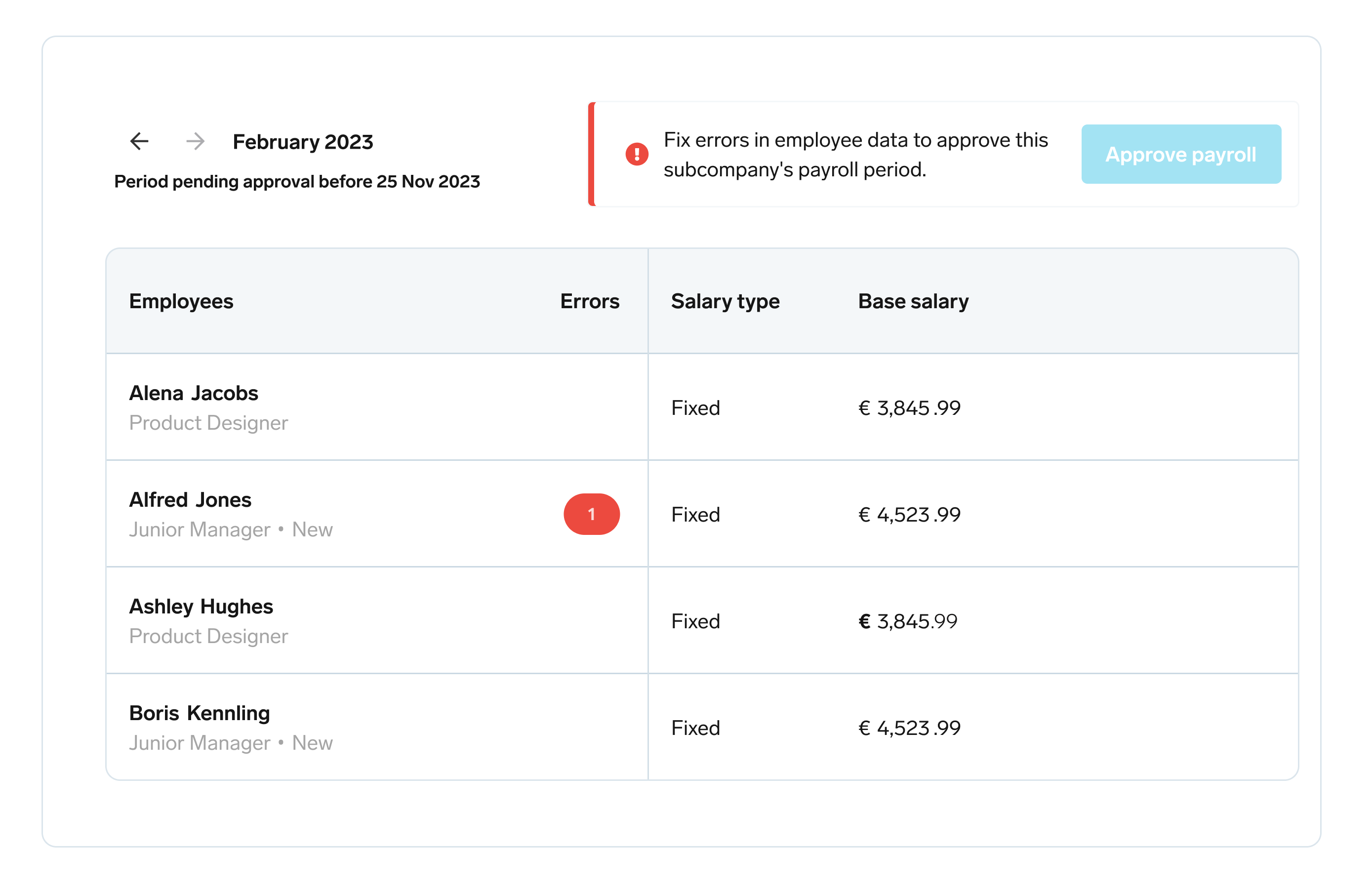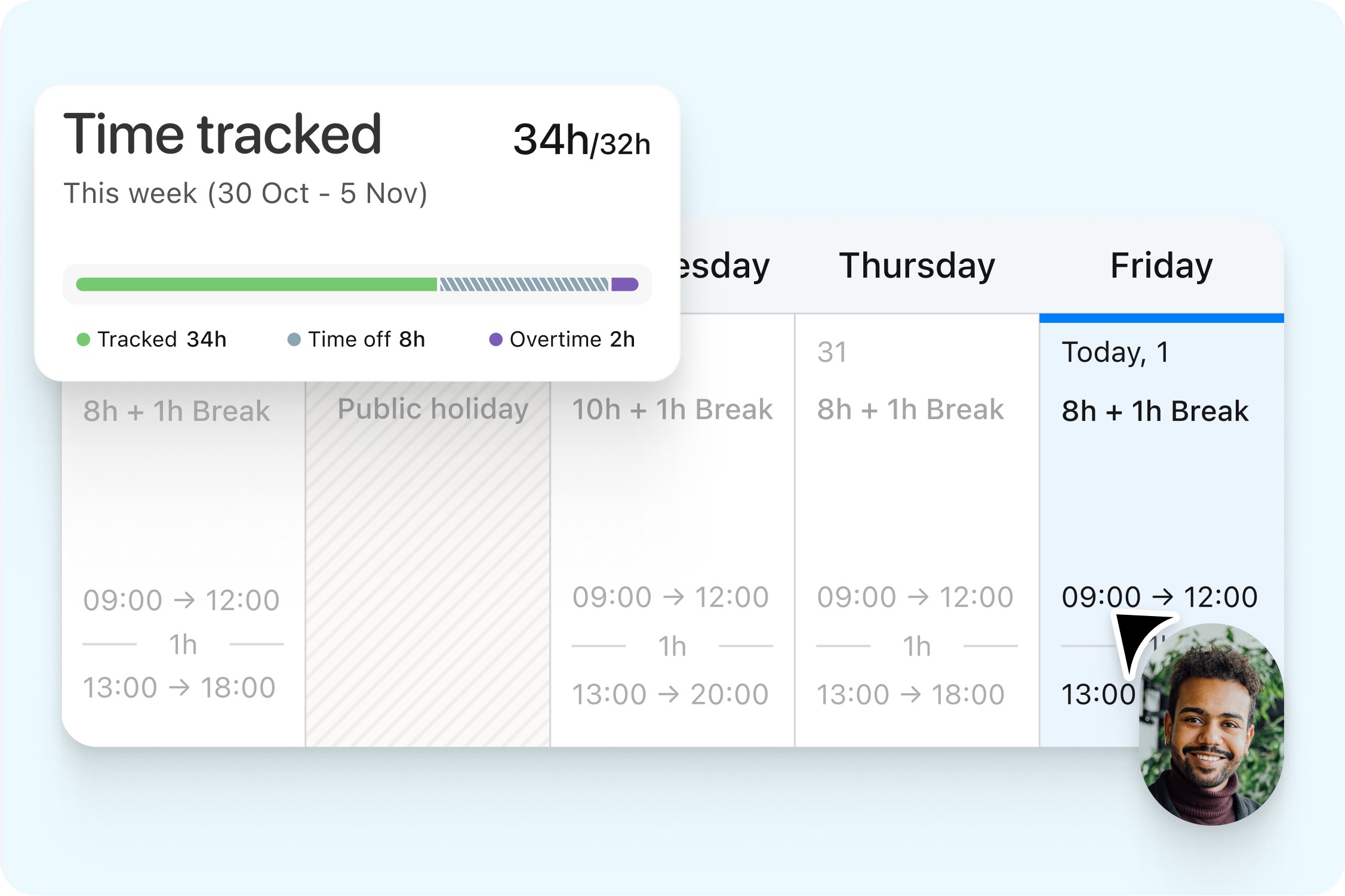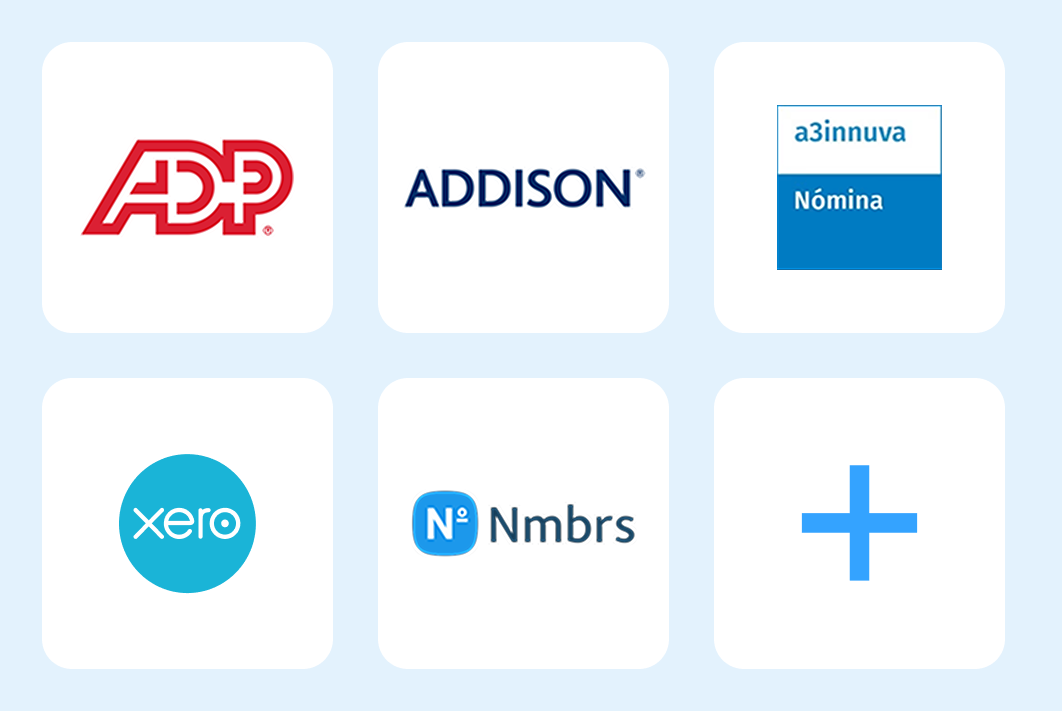
Centralise payroll processes
Manage payroll, automate processes and ensure compliance with Personio’s comprehensive payroll software.
Explore our productHow to process payroll: 8 simple steps for HR teams

Payroll is stressful. Calculating wages and making payments while paying attention to the various laws that apply makes the process complicated and time-consuming. Plus, there’s no room for making mistakes – even if the manual work involved makes that likely.\
All of this means that processing payroll can often feel intimidating. Fortunately, there are standard steps you can follow to ensure that you stay on track. Plus, there’s software that can help you simplify the process to save you time and keep things accurate.
In this article, we’ll give you a step-by-step guide to payroll processing and show you how the right software can simplify every stage of the process to make your job easier.
The essential steps for running (and streamlining) payroll
There’s a lot to be done when you’re processing payroll, but having a methodical approach to the process can help you to ensure that you’re doing everything you need to do. With that in mind, we’ve laid out some basic payroll processing steps you can follow.
1. Set up HR and payroll software
Without a dedicated payroll tool, you need to work through the entire process manually. Which can lead to errors and angry employees (and managers).
You can use payroll software to automate many tasks in the payroll process. For example, you can schedule automatic reminders to employees about completing their timesheets and nudge managers to approve them. You could also send emails half an hour before the deadline for completion and afterwards if the timesheet hasn’t been completed or approved.
You can also set up payroll integrations with a host of different programs to make paying your team easier than ever. These integrations can help you to manage your employees’ personal information and work across programs with ease.
With Personio, you can enable employees to submit and access payroll-related data. Our platform allows you to manage all HR processes, including payroll, with a single solution. Plus, you can easily generate exports of aggregated data for your external payroll partner.
Automate your payroll processes

Personio helps you run payroll quicker and more accurately – saving you time and reducing costly errors.
Learn more2. Design a payroll policy
A payroll policy is a set of guidelines that establishes important procedures for employees’ pay. A good one should contain the most important processes about who and what gets paid as well as how and when that happens.
This policy should cover:
The dates your team can expect to be paid
Team members’ net and gross pay
How payments are made (e.g. by direct deposit)
Perks and benefits for each employee
Payroll deductions (e.g. income tax and national insurance)
Overtime and holiday pay
Company leave policies
This policy reduces the chance of there being confusion or misunderstandings about how to calculate and process payroll, which sets you up for a successful pay cycle every time.
3. Collect and clean employee data
Accurate employee data is essential for performing payroll duties effectively, but it’s a time-consuming process to collect and clean employee data manually.
Gathering bank details, tax forms and other data, while ensuring your records are consistent and free of duplicate data across HR and payroll software systems – can be tough.
A good payroll processor will make these tasks simple and easy from the minute a team member onboards to the moment they get their first salary. It will help the employee fill in the correct information accurately before the payroll cycle, so that you’re not rushed.
4. Set up direct deposits
The most common way to pay employees is via direct deposit. To do this, you need to collect details, including a signed document stating which bank account you’ll be paying into, along with account number, sort code and type and account name (typically their own name).
Employees will need to give you this data several days before they’re scheduled to be paid so that you have time to input everything into your payroll software and run the payroll cycle smoothly.
5. Gather and check employee timesheets
Timesheets are a must-have to know exactly how many hours hourly employees have put in to accurately calculate gross pay. Even for contract/salaried employees, timesheets can help you to understand performance and attendance, which can impact bonuses and promotions.
This makes it vital that timesheets are accurate and up to date by the time a payroll cycle occurs.
The right software makes tracking attendance and monitoring performance easy. It will make it easier for employees to update timesheets to provide you with reliable working data so that you can compensate them properly and abide by legal regulations and industry standards.

6. Verify your payroll data
Performance bonuses, retirement contributions, commission – all of these can change on a monthly basis. That’s why it’s important to check that all of the information you have for an employee is accurate and up to date at every pay cycle.
If an update occurs after the payroll period has closed, note the adjustments and account for them in the reconciling process to avoid discrepancies in your records. Remember to submit your tax reports with the updated information to avoid any tax consequences of mistakes.
7. Submit payroll and payslips
Once you’ve gathered everything, it’s time to make a full payment submission for all eligible staff. Even with a payroll service provider, it’s important to double check that you’re inputting accurate information, such as hourly wage, before you approve the payroll for that run.
After payroll has been submitted, you need to give employees their payslips. For this, you can generate payslips and send them out automatically. Or you can make payslips available for employees to download from their own profile on your payroll system.
8. Update your payroll records
Every country has laws that govern what employee payroll information you must keep and pass on to the relevant authorities. In Europe, the laws differ depending on the country.
In the UK, you need to collect and maintain records of employee pay and deductions and report this to HM Revenue and Customs (HMRC). You must also keep track of absences (like annual leave and sick days), tax code notices and taxable expenses or benefits.
You also need to create annual tax reports for payroll compliance, so incorrect payroll reports are not an option when it comes to staying within the confines of the law.
Tips for improving your payroll processes
With everything that needs to be done, payroll can be a rush – and that’s when errors are bound to creep in. That said, there are ways to make the process run more smoothly. Let’s take a look at some of these.
Schedule: Set time aside each month or week so you’re not caught off guard when your payroll period comes around. Proper planning will help you be better prepared and therefore, less prone to rushing and making mistakes.
Set realistic expectations: Tell employees exactly when they can expect the funds to land in their account – not just when you’ll submit payments. This will reduce the likelihood that you’ll have to field questions about when employees will be paid.
Monitor changes in regulations: It’s important to stay compliant with your country’s laws. This will not only help you avoid ending up in legal hot water, but also ensure that you act in your company’s and employee’s best interests.
Keep clean records: Make sure the information you collect is accurate and the same across HR programs. This is especially important for tax and compliance purposes – you never know when the authorities might want to look at your records.
Automate where possible: Using specialised software to reduce the workload of payroll processing will help you to save yourself loads of time and stress.
Keep track of your payroll costs: Monitoring salaries, wages, overtime and bonuses, as well as the cost of external payroll services, will help you to plan and budget better.
Stick to your deadlines: It’s best to think of payroll due dates as firm and immovable. Be sure to keep track of and stick to the deadlines for jobs that need to be done at certain intervals; for example, reporting on payroll to the authorities.
Manage payroll better with Personio

Processing payroll doesn’t need to be tedious or complicated. As long as you take a methodical approach and use the right tools to get the job done, you can avoid mistakes – and make the task a whole lot easier.
At Personio, we’ll help you maintain exceptionally accurate records to make payroll a seamless process. Our customisable payroll solutions come with a number of advanced features and various integrations to create a connected ecosystem between payroll and HR.
Stop the stresses of payroll, no matter how many times a week or month your pay cycles occur. It doesn’t have to be difficult when you’ve got Personio on your side.
Run smoother payroll for fewer headaches and happier employees

Personio’s payroll software connects with your other HR tools and payroll platforms for streamlined and connected payroll operations.
Learn moreFAQs
How do you process payroll?
There are many ways to process payroll and each company’s approach is different. The trick is to ensure you have a standard operating procedure for the process, which everyone working in payroll can understand and follow, leaving little room for error. The basic steps should look something like this:
Set up payroll software
Create a payroll policy
Collect and clean employee data
Set up direct deposit
Gather and check employee timesheets
Verify payroll data
Submit payroll and payslips
Update your payroll records
What is the formula for payroll?
The formula for payroll varies depending on the country you’re operating in, but there are some standard calculations that are useful across the board:
Gross pay for hourly employees: Hours worked ✕ hourly wage
Gross pay for salaried employees: Annual salary / pay periods per year
Net pay: Gross pay﹣deductions + tax contributions
What is the normal payroll process?
The payroll process will look slightly different at every company and perhaps even every pay cycle. Generally speaking, though, it involves tracking hours worked, calculating employees’ pay and deductions along with sharing payslips with employees.
What is a payroll processing checklist?
A payroll processing checklist is a list of actions you must follow to make sure that you’re using the right procedures at every pay cycle. It’s there to ensure there are as few errors as possible with regards to classifying employees, calculating working hours, approving benefits, withholding and reporting on taxes, and paying on time and in full.
